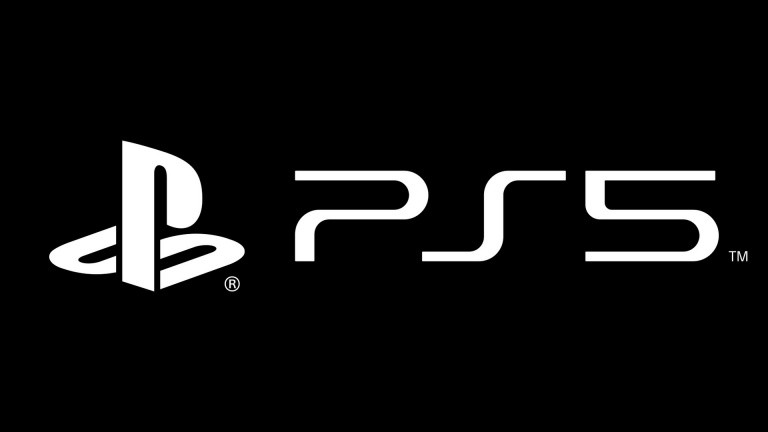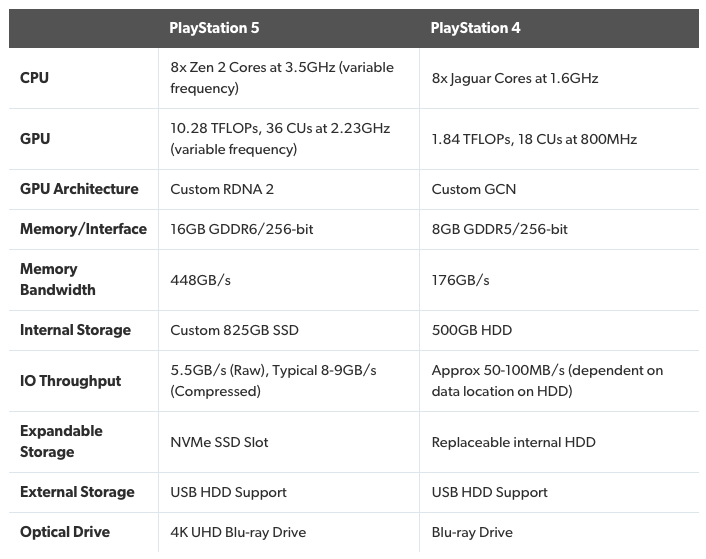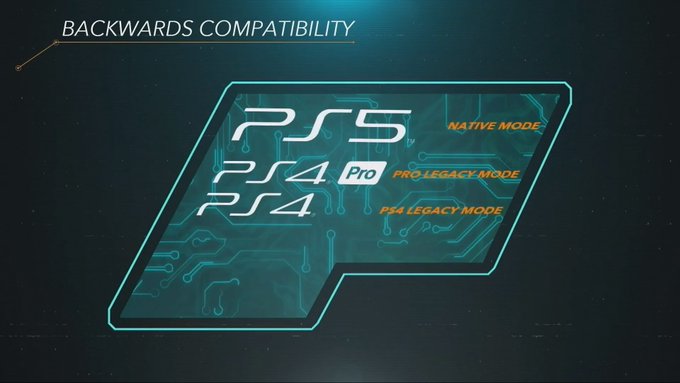After Microsoft revealed the full specs for its next-gen Xbox Series X console earlier this week, Sony has followed up today with a pre-recorded presentation from PlayStation 5 design architect Mark Cerny. The experts at Eurogamer’s Digital Foundry also published a detailed analysis of the PS5’s specs today, showing Sony’s interesting choices for its next-gen console.
Even though both Sony and Microsoft both opted for Zen 2 CPUs and Custom RDNA 2 GPUs from AMD for their new consoles, Sony opted for variable frequencies for the PlayStation 5’s GPU and CPU. “It’s a completely different paradigm,” explained Cerny. “Rather than running at constant frequency and letting the power vary based on the workload, we run at essentially constant power and let the frequency vary based on the workload.”
Indeed, the 36 Compute units in the PS5’s GPU will be able to reach a maximum frequency of 2.23Ghz, which is higher than the 1.825GHz frequency for the 52 CUs in the Xbox Series X GPU. Overall, the PS5 GPU will deliver 10.28 teraflops of computing power, which is less than the 12 teraflops for the Xbox Series X GPU.
On the CPU side, the 8 Zen 2 cores in the PS5 CPU will be able to run at a maximum variable frequency of 3.5Ghz, comparable to the 3.8Ghz (3.6 Ghz with hyper-threading) for the 8 Zen 2 cores in the Xbox Series X CPU.
What’s really impressive so far about the PlayStation 5 is its custom-designed SSD, which will deliver truly groundbreaking speeds. Sony announced a 5.5GB/s bandwidth that can go up to 8-9GB/s with a data compression algorithm. That’s much faster than the SSD in Microsoft’s Xbox Series X, which has a 2.4 GB/s bandwidth (raw) than can go up to 4.8 GB/s with a compression algorithm.
With only 825 GB of storage, the SSD in the PlayStation 5 is also smaller than the 1TB SSD in the Xbox Series X, but the PlayStation 5 will come with an NVMe slot for external SSDs that will need to be certified by Sony. Microsoft chose a different route with proprietary 1TB expansion cards built by Seagate, though slower external storage will still be allowed for Xbox One games and backwards compatible Xbox 360 and OG Xbox games.
Speaking of backwards compatibility, Sony is currently working to support the top 100 PS4 games at launch. That’s a stark difference compared to Xbox Series X, which will support all existing Xbox One games, as well as Xbox 360 and OG Xbox games that are already backwards compatible.
Sony also mentioned its 3D audio technology powered by its Tempest Engine, which can support hundreds of different audio sources. This technology will apparently work with your existing headphones, TV speakers and sound bars, as well as multi-speaker setups.
What Sony didn’t show today is the design of its new console, which remains a mystery. Microsoft opted for a “monolith” design for its Xbox Series X, though the height of the next-gen Xbox is approximately the same as the length of the Xbox One X. Pictures of V-shaped PS5 development kits have already leaked online, but the console’s final design may well look different.
Microsoft promised that the Xbox Series X would be the most powerful next-gen console, and it’s definitely true in terms of GPU power. However, the ultra-fast SSD could be a true game-changer, as pointed out Digital Foundry’s John Linneman today.
The craziest thing about PS5 is the speed of the SSD. 5.5 GB/s is just part of the story – there is a lot of custom silicon in there to ensure that the system isn't bottlenecked in other areas. It's *REALLY* fast on paper – a lot faster than Xbox Series X even.
— John Linneman (@dark1x) March 18, 2020
Even though Microsoft has the most powerful next-gen console on paper, Sony managed to sell more than 100 million PS4 consoles during this console generation, and we shouldn’t underestimate the power of ecosystems and brand loyalty. Sony also had a stellar lineup of exclusives on PS4, and this will likely continue with the PS5. The console wars are definitely still a thing, but Xbox Series X, Xbox Game Pass, and Project xCloud, Microsoft now seems in a much better position to compete with Sony and Nintendo.




